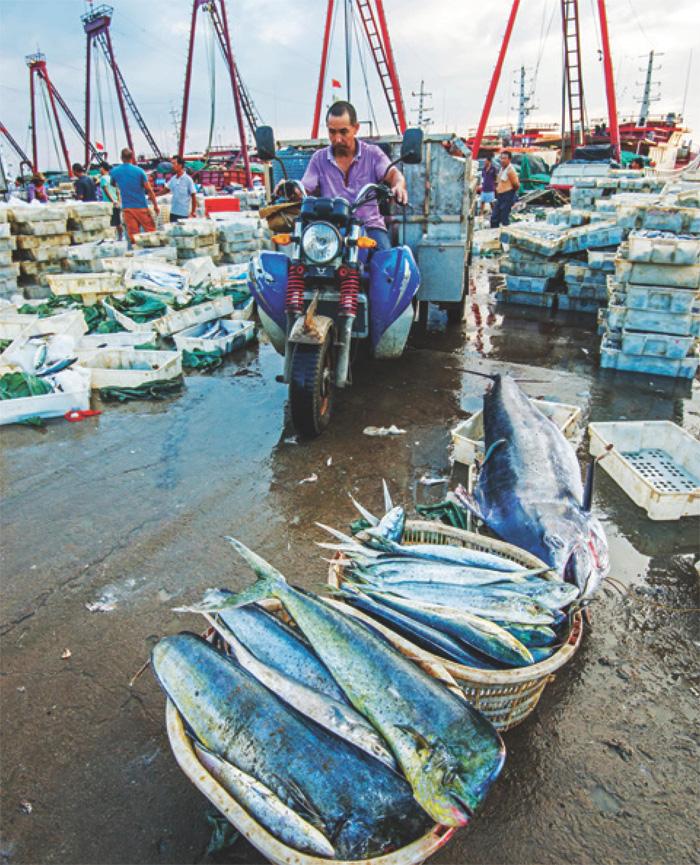开渔后的博贺渔港总是忙碌而又充满生机
孟庆春



The Bohe Fishing Harbor wakes before the sun. Each morning, fishermen wearing powerful headlamps arrive under the spell of darkness to uncover their boats, ready the nets, and light incense to bless the voyage ahead.
Each September-May fishing season, Guangdongs biggest fishing port produces 100,000 tons of fresh catch, from shrimp to perch to a significant portion of the worlds tilapia. Over 1,400 fishing boats call the deep-water harbor home, with the biggest departing each week for four or five-day journeys up the coast or down to the South China Sea. Meanwhile, small family-owned dinghies putter around the closer waters as they have for millennia, carrying offerings to the sea goddess on their prows makeshift altars.
Bohe used to be a major shipbuilding center and port of departure for Maritime Silk Road treasures bound for Southeast Asia. Today, when the ships come in, its crates of sea treasures which are unloaded, sorted, and sold on site, packed onto waiting ice trucks for processing centers and seafood markets around the region, if not sold to a passing tourist. Fishermen (and women) and buyers, clad in gumboots and straw hats, expertly weave through the teeming and slippery dock, sizing up the value of the days harvest by sight.
The government is now expanding Bohes seafood processing and cultural facilities in effort to revitalize its Silk Road history. Strict no-catch seasons are also being enforced, in order to combat overfishing along Chinas coasts. As younger generations seek less dangerous and better paid occupations, the culture here faces an uncertain future, but locals remain proud of their way of life—as a traditional regional sea shanty boasts, “Officials must know how to read words/ Fishermen must know how to read tides.”

